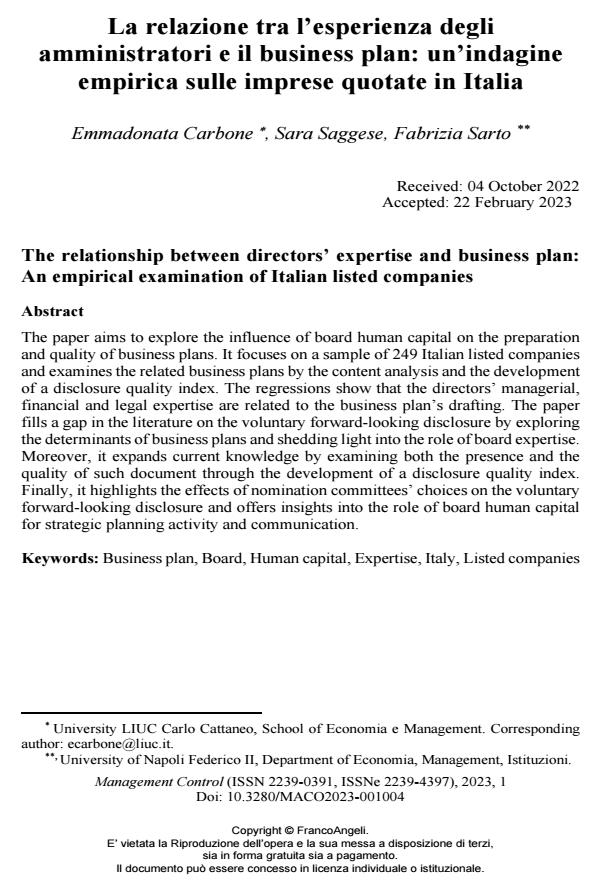La relazione tra l’esperienza degli amministratori e il business plan: un’indagine empirica sulle imprese quotate in Italia
Titolo Rivista MANAGEMENT CONTROL
Autori/Curatori Emmadonata Carbone, Sara Saggese, Fabrizia Sarto
Anno di pubblicazione 2023 Fascicolo 2023/1
Lingua Italiano Numero pagine 26 P. 69-94 Dimensione file 319 KB
DOI 10.3280/MACO2023-001004
Il DOI è il codice a barre della proprietà intellettuale: per saperne di più
clicca qui
Qui sotto puoi vedere in anteprima la prima pagina di questo articolo.
Se questo articolo ti interessa, lo puoi acquistare (e scaricare in formato pdf) seguendo le facili indicazioni per acquistare il download credit. Acquista Download Credits per scaricare questo Articolo in formato PDF

FrancoAngeli è membro della Publishers International Linking Association, Inc (PILA)associazione indipendente e non profit per facilitare (attraverso i servizi tecnologici implementati da CrossRef.org) l’accesso degli studiosi ai contenuti digitali nelle pubblicazioni professionali e scientifiche
The paper aims to explore the influence of board human capital on the preparation and quality of business plans. It focuses on a sample of 249 Italian listed companies and examines the related business plans by the content analysis and the development of a disclosure quality index. The regressions show that the directors’ managerial, financial and legal expertise are related to the business plan’s drafting. The paper fills a gap in the literature on the voluntary forward-looking disclosure by exploring the determinants of business plans and shedding light into the role of board expertise. Moreover, it expands current knowledge by examining both the presence and the quality of such document through the development of a disclosure quality index. Finally, it highlights the effects of nomination committees’ choices on the voluntary forward-looking disclosure and offers insights into the role of board human capital for strategic planning activity and communication.
Parole chiave:Business plan, Board, Human capital, Expertise, Italy, Listed companies
- Developing a Conceptual Framework for Business Plan Drafting: Insights from Practitioners Paolo Roffia, in Administrative Sciences /2025 pp.113
DOI: 10.3390/admsci15030113
Emmadonata Carbone, Sara Saggese, Fabrizia Sarto, La relazione tra l’esperienza degli amministratori e il business plan: un’indagine empirica sulle imprese quotate in Italia in "MANAGEMENT CONTROL" 1/2023, pp 69-94, DOI: 10.3280/MACO2023-001004